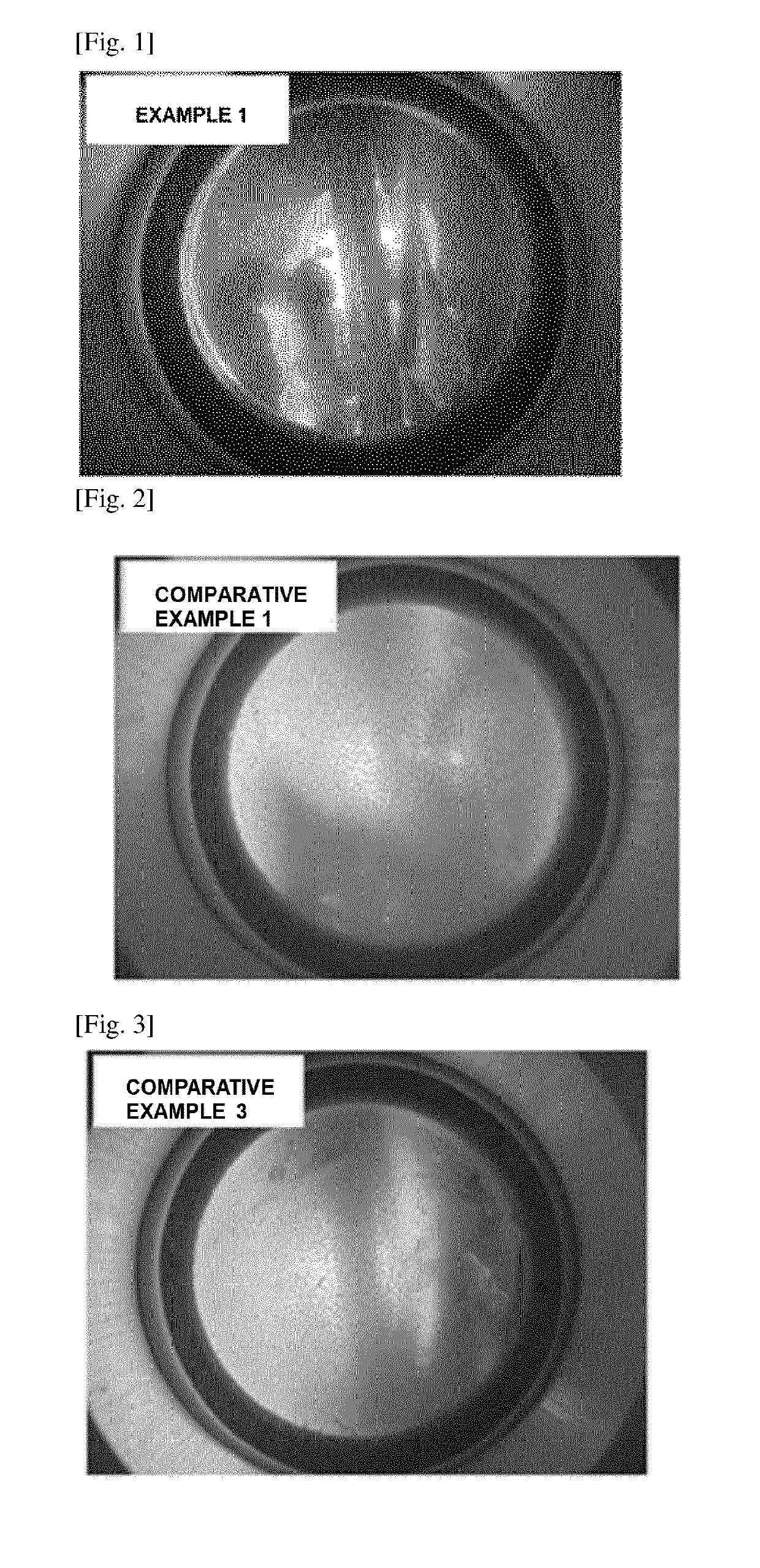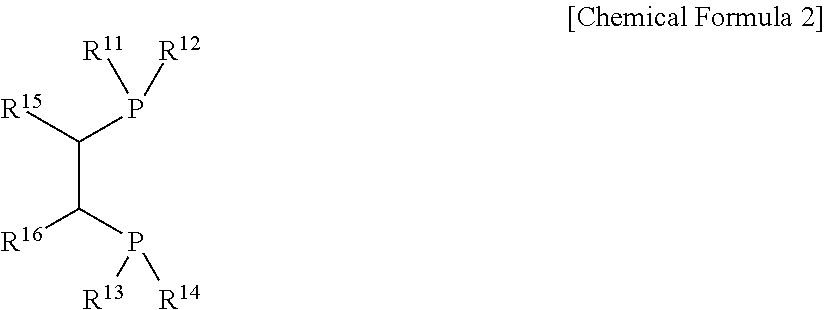Method of Inhibiting Reactor Fouling and Oligomerisation of Olefin Using the Same
a reactor and oligomerization technology, applied in the direction of organic compound/hydride/coordination complex catalyst, physical/chemical process catalyst, hydrocarbon preparation catalyst, etc., can solve the problems of high cost, difficult control of reaction heat, deterioration of heat efficiency and production efficiency, etc., to prevent polymers from being produced, easy to control a temperature, and the effect of maximizing catalytic activity
- Summary
- Abstract
- Description
- Claims
- Application Information
AI Technical Summary
Benefits of technology
Problems solved by technology
Method used
Image
Examples
preparation example 1
Preparation of bis-[(S,S)-(phenyl)2PCH(methyl)CH(methyl)P(phenyl)2 dichloro(μ-chloro)chromium] ([CrCl2(μ-Cl){(P,P)-k2-(S,S)-((Ph)2 P(Me)CH—CH(Me)P(Ph)2)}]2)
[0102]After 1.1 g (3.0 mmol) of tris(tetrahydrofuran)chromium trichloride (CrCl3(THF)3) was dissolved in 100 mL of dichloromethane, 1.28 g (3.0 mmol) of (S,S)-(phenyl)2 PCH(methyl)CH(methyl)P(phenyl)2 ligand compound was also dissolved in 50 mL of dichloromethane and slowly added thereto. After the reactants were stirred for 3 hours, volatile materials were removed therefrom under vacuum, and 100 mL of petroleum ether was added dropwise thereto, thereby obtaining a blue solid as a precipitate. The resultant was washed with 100 mL of petroleum ether two times, thereby obtaining 1.58 g of the title compound (yield: 90%).
example 1
[0103]1 L of methylcyclohexane (MCH) was injected into a 2 L semi-batch reactor purged with nitrogen after being sufficiently dried, and 1 g of petroleum jelly (trade name: White Protopet®) was dispersed in 10 mL of MCH to thereby be injected into the semi-batch reactor. After injecting 1.57 g (4 mmol) of 18 wt % mMAO-3A heptane solution (cocatalyst) into the reactor, a temperature of the semi-batch reactor was heated to 60° C. Then, pressure in the reactor was raised to 27 bar using ethylene. After injecting 3.1 mg (5.3 μmol-Cr) of bis-[(S,S)-(phenyl)2PCH(methyl)CH(methyl)P(phenyl)2 dichloro(μ-chloro)chromium] into an upper catalyst port of the semi-batch reactor, the pressure in the reactor was raised to 30 bar using ethylene. Then, ethylene was continuously supplied, thereby performing an oligomerization reaction for 80 minutes (stirring condition: 200 rpm). Thereafter, in order to inactive a catalyst, 100 ml of 10 vol % hydrochloric acid aqueous solution-containing ethanol (wt:w...
example 2
[0106]A reaction product was obtained in the same manner as in Example 1 except for using 5.8 mg (10.0 μmol-Cr) of bis-[(S,S)-(phenyl)2PCH(methyl)CH(methyl)P(phenyl)2 dichloro(μ-chloro)chromium], and weights of primary and secondary polymers were measured by the same method as in Example 1.
[0107]As a result, 588 g of the reaction product (LAO, C6+C8) was obtained, and among them, an amount of 1-hexene was 247 g, and an amount of 1-octene was 341 g. Further, a total amount of polyethylenes (PE) obtained as by-products was 2.12 g, and among them, an amount of the primary polymer was 1.24 g and an amount of the secondary polymer was 0.88 g (see the following Table 1).
PUM
| Property | Measurement | Unit |
|---|---|---|
| melting point | aaaaa | aaaaa |
| melting point | aaaaa | aaaaa |
| temperature | aaaaa | aaaaa |
Abstract
Description
Claims
Application Information
 Login to View More
Login to View More - R&D
- Intellectual Property
- Life Sciences
- Materials
- Tech Scout
- Unparalleled Data Quality
- Higher Quality Content
- 60% Fewer Hallucinations
Browse by: Latest US Patents, China's latest patents, Technical Efficacy Thesaurus, Application Domain, Technology Topic, Popular Technical Reports.
© 2025 PatSnap. All rights reserved.Legal|Privacy policy|Modern Slavery Act Transparency Statement|Sitemap|About US| Contact US: help@patsnap.com



